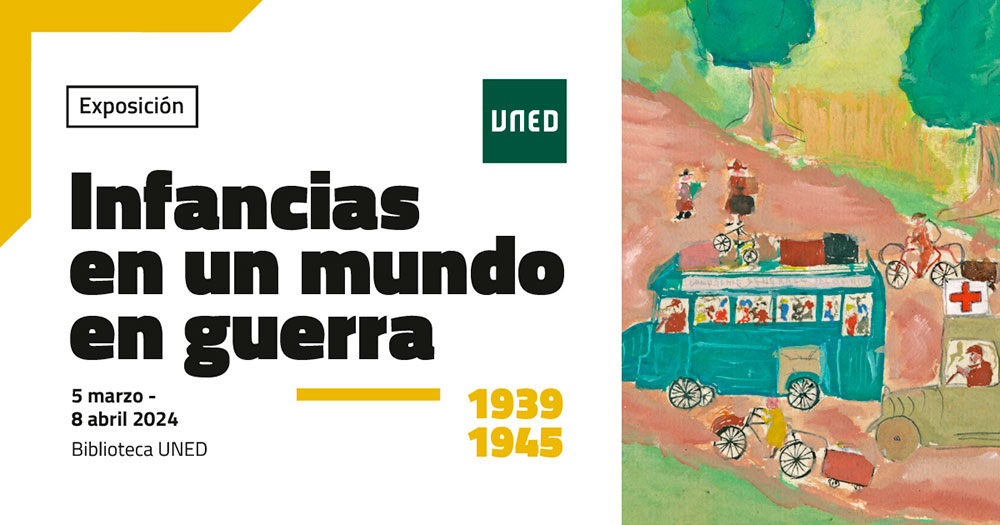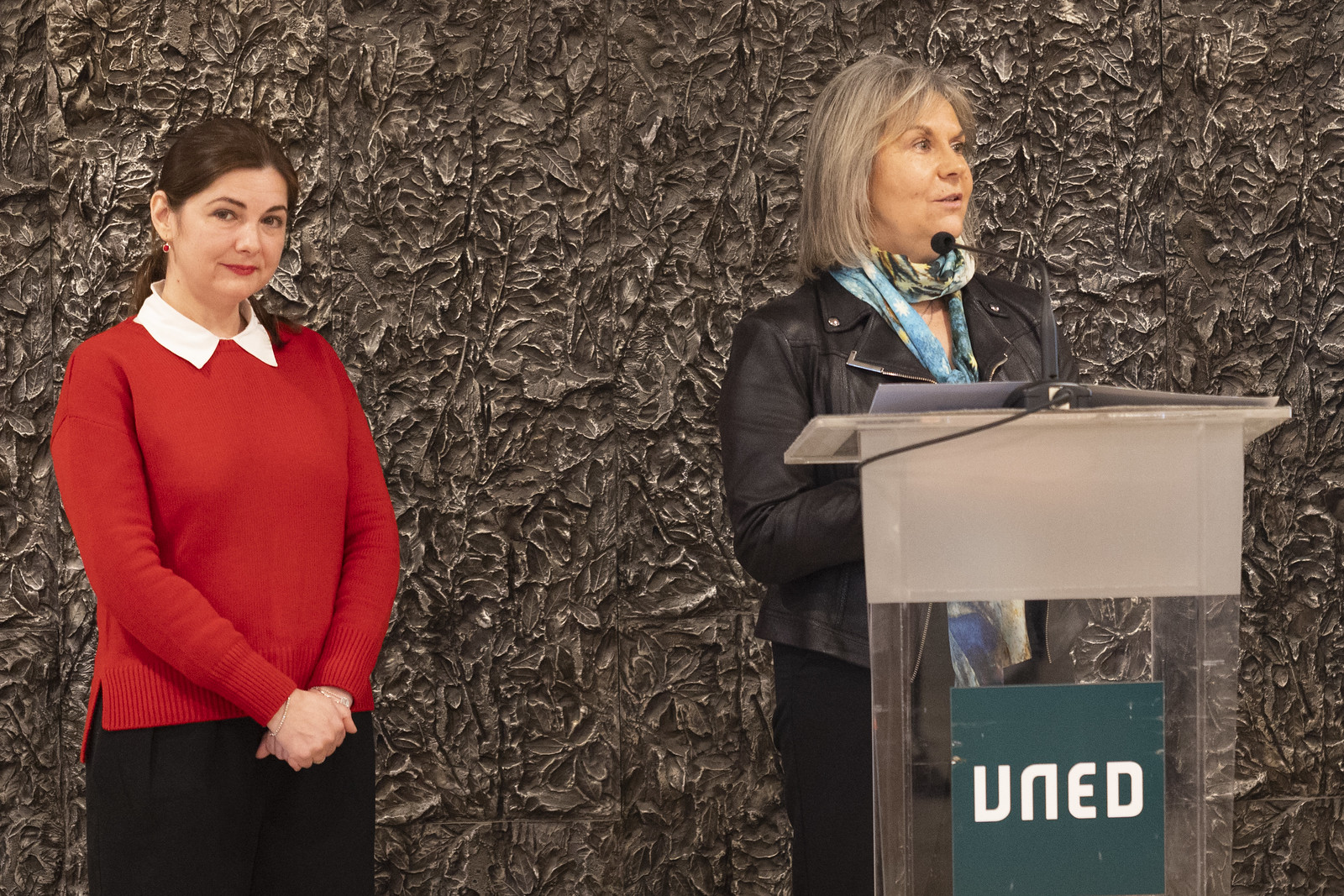ACTIVITY
Childhoods in a World at War 1939-1945
- Traveling Exhibition -

© Réseau Canopé – Musée national de l’Education (1979.09324.33)
Inauguration of the traveling exhibition “Childhoods in a world at war (1939-1945)”, at the UNED Central Library.
On 5 March 2024, at 10: 30, the travelling exhibition “Remembering childhood in European wartimes (1939-1945)” was inaugurated at the Central Library of the UNED, with the participation of the research curators – Luiza Iordache Cârstea, Celeste Muñoz Martínez, Rocío Negrete Peña-, the Director of the Library, Isabel Calzas González, the Head of Cultural Activities of the UNED Library, Elodia Hernández Uríza, and the First Vice-Rector and Vice-Rector for Research, Transfer and Scientific Dissemination of the UNED, Rosa M. ª Martín Aranda. The event was attended by members of the university community, the Department of Contemporary History and the Faculty of Geography and History of the UNED. This activity, carried out in collaboration with the Cultural Activities Commission of the UNED Library, is part of International Women’s Day.
Pedagogical Guide
This pedagogical guide, elaborated by our partner EuroClio, is created as part of the REMEMCHILD-Remembering childhood in European wartimes (101091194 CERV-2022-CITIZENS-REM), a project created to better represent children and women and to their experiences during and memories of wartime in Europe, especially related to the Second World War and the early postwar period.
Children formed one of the most vulnerable parts of society during the Second World War. Jewish and Roma children make up a big part of the victims of the Holocaust, children with disabilities were abused and experimented on, and children of members of the Resistance were often victims of violence. During wartime, children are often interned, displaced, orphaned, etc. They are victims, protagonists, survivors of conflicts, and their memory and agency is often forgotten when remembering the events.
This guide is designed to be used with the “Childhoods in a World at War 1939-1945” exhibition, which is especially aimed to inform and interest younger generations, who have not experienced the violent and traumatic past 20th century European history. The activity is centred around children’s drawings and pictures and their use as historical sources. They offer unique insights into the experience of children during wartime.







